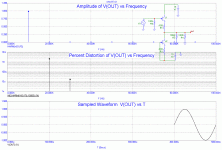john curl said:We offer both switchable balanced or unbalanced input, and we do a pretty good job of it.
Every other way is too complex or too expensive.
A socket would be more fool-proof: you never know how smart are your customers (especially magazine review guys) to use flexibility you gave them unproperly...
Ok, back to my new office furniture... Talk to you later!

john curl said:Then use a dual.
Again, that's not enough.
john curl said:Please Edmond, show me your way of solving this problem.
I know it's difficult to design a perfect balanced input stage. But your are the king, not me.
john curl said:One should not criticize, unless they can do better.
I can do better!
http://www.synaesthesia.ca/Auxiliary-circuitry.html
Now, may I criticize?
syn08 said:
I can do better!Scroll down the page to the bottom.
http://www.synaesthesia.ca/Auxiliary-circuitry.html
Now, may I criticize?
Just a plain instrumental amp from a schoolbook with my favorite opamps on inputs.
I have an 8 channel studio board made of DISCRETE op amps that uses that configuration. Made it for Elliott Mazer in 1980, resided at CCRMA for many years, and was given back to me in gratitude for my effort. It is not the best way to go for a simple power amp. However, I was told that the board was banned by Sony because it was too revealing in listening tests.
OK, what is wrong with an IC front end? Solves lots of problems, but if I were to do it, I just might use Scott Wurcer's IN Amp design, the AD 524, rather than do my own, unless I wanted an all discrete design. Then it would take almost as many quality parts as the power amp itself, and not very practical.
If you are talking about driving a power amp with a differential (i.e. balanced) signal) I'd just go with a diamond buffer driving the power amp feedback leg ground point. Since the diamond buffer is similar in structure to 1 half of th e dual diff input pair (N &P), the bias current s can be made quite similar.
gor general balanced to single ended . . . . jus t take th e signal between th e hot and gnd outputs and ignore the cold output. Penaly is 6dB reduction in output level, but so what.
gor general balanced to single ended . . . . jus t take th e signal between th e hot and gnd outputs and ignore the cold output. Penaly is 6dB reduction in output level, but so what.
Bonsai said:Penaly is 6dB reduction in output level, but so what.
Do you have regulations in Japan that require grounding of all equipment through power outlets?
Regarding the CMRR - this is not any main issue. To utilize advantage of complementary symmetrical structure, we need balanced drive to cancel distortion. The JFET input buffer enables to use -input in a reasonable way. Do not forget there is a feedback. CTC Blowtorch does not need additional input buffer.
The balanced drive of complementary symmetrical structure is much more important than CMRR with 1 - 2m input cable. If John wanted to use the opamp, he would do so. Anyone can use an opamp.
The balanced drive of complementary symmetrical structure is much more important than CMRR with 1 - 2m input cable. If John wanted to use the opamp, he would do so. Anyone can use an opamp.
- Status
- Not open for further replies.
- Home
- Amplifiers
- Solid State
- John Curl's Blowtorch preamplifier

